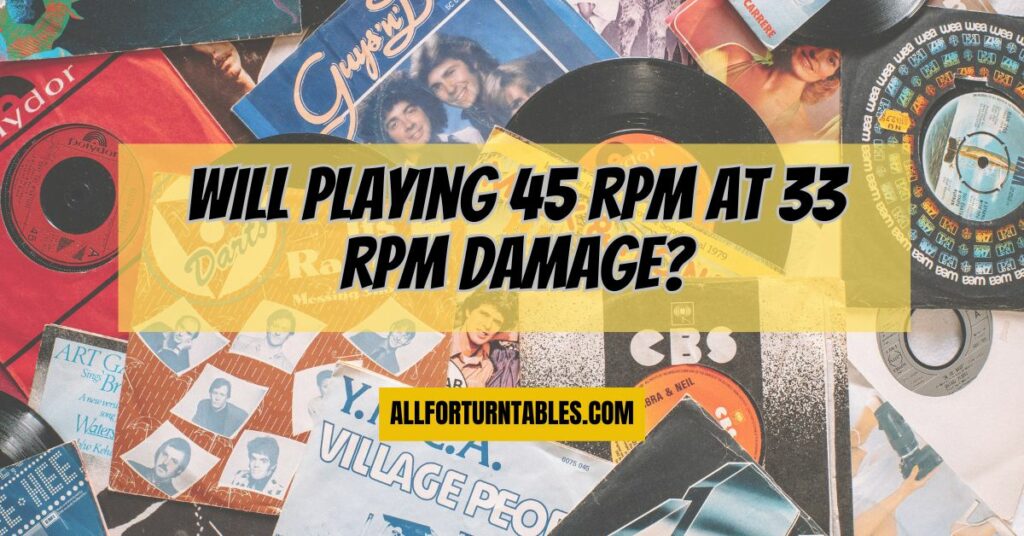Vinyl records have been making a remarkable comeback in recent years, drawing both audiophiles and music enthusiasts back to the warmth and charm of analog audio. Yet, as more people explore their vinyl collections, questions arise about playback speeds and their potential impact on records. One common query is whether playing a 45 RPM record at 33 RPM can cause damage. In this comprehensive article, we’ll delve into the mechanics of vinyl records, the science behind playback speeds, and the real consequences of experimenting with different RPMs.
Understanding Vinyl Record Playback Speeds
Before we dive into the potential damage, it’s essential to grasp the fundamentals of vinyl record playback speeds:
- 45 RPM (Revolutions Per Minute): This speed is typically used for singles and EPs (extended play) records. It results in a faster rotation of the record, allowing for shorter tracks on each side and often resulting in higher audio fidelity.
- 33 RPM (Revolutions Per Minute): Most commonly used for full-length albums or LPs (long play) records, 33 RPM provides a slower rotation speed. This slower speed allows for longer tracks on each side, although it may slightly compromise high-end audio fidelity compared to higher-speed formats.
The Consequences of Playing a 45 RPM Record at 33 RPM
Now, let’s explore what happens when you play a 45 RPM vinyl record at 33 RPM:
- Pitch Alteration: The most noticeable effect is a significant reduction in pitch. When played at 33 RPM, the music will sound slower, and both vocals and instruments will be at a lower key. The change in pitch is reversible; once you return the playback speed to 45 RPM, the pitch will return to its original state.
- Time Stretching: Slowing down the playback speed to 33 RPM will extend the playback time of the record. This means each side of the record will play for a more extended period. While this can be useful if you want to listen to a single for a longer duration, it may result in audio distortion toward the end of the side.
- Fidelity and Sound Quality: Playing a 45 RPM record at 33 RPM can compromise audio fidelity and sound quality. The slower speed may introduce distortion, loss of detail, and a reduction in overall clarity. High-frequency sounds may lose some of their sparkle, and the overall listening experience may not be as enjoyable as intended.
- Potential Groove Wear: Continuous playback of a 45 RPM record at 33 RPM can exert additional stress on the grooves and the stylus (needle). While this is unlikely to cause instant damage, prolonged use in this manner may accelerate wear and potentially harm your records and stylus.
Best Practices for Vinyl Playback
To ensure the longevity and sound quality of your vinyl records, it’s essential to follow some best practices:
- Use the Correct Speed: Always use the appropriate playback speed for your vinyl records as indicated on the label or packaging.
- Handle Records Carefully: Handle your vinyl records by their edges to prevent fingerprints and scratches.
- Maintain Your Turntable: Regularly clean and maintain your turntable, including the stylus, to ensure optimal playback quality.
- Store Records Properly: Store your records vertically in a cool, dry place and protect them with polyethylene or polypropylene inner sleeves.
Conclusion: Balancing Experimentation and Preservation
In summary, playing a 45 RPM vinyl record at 33 RPM can have noticeable effects on pitch, playback time, sound quality, and may introduce potential wear on your records and stylus. While it can be an interesting experiment for those looking to explore creative sound effects, it’s not recommended for everyday listening. To preserve the intended sonic experience and the longevity of your vinyl records, it’s best to play them at their designated playback speeds.
Balancing experimentation with responsible vinyl care will help you enjoy the unique world of vinyl records while preserving their cherished audio qualities. Whether you’re spinning singles or LPs, your turntable can provide a seamless and enjoyable listening experience when used correctly.


